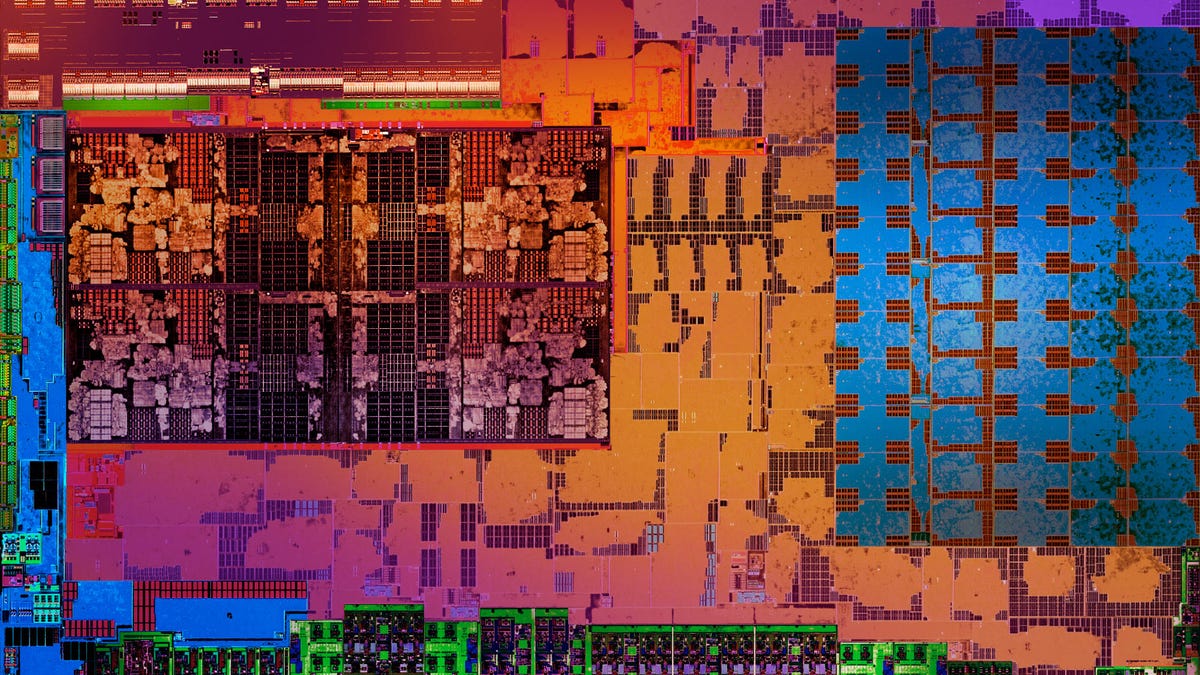AMD Ryzen processors want to power your next skinny laptop
AMD's Ryzen 5 and 7 mobile chips, based on its Zen processing and Vega GPU cores, will arrive first in ultrathin models from HP, Lenovo and Acer.

The Ryzen APU, with the Zen CPU die on the left and the Vega GPU die on the right.
We've recently seen the first laptops powered by Intel's eighth-generation mobile processors arrive, and now it's AMD's turn. The difference is Intel's processors use a "refreshed" version of the seventh-generation Kaby Lake architecture and a rebranded version of the graphics processor that gains most of its improvements through the addition of a couple of cores and some tweaks.
For AMD, however, the Ryzen 5 and Ryzen 7 use the latest versions of both its CPU and GPU architectures, including a couple of new tricks that haven't yet made their way into the desktop versions.
For the most part, AMD's Zen processing architecture was one of those overhauls that makes future upgrades faster and easier for AMD. Most of its advantages seem to accrue in applications that make heavy use of multiple cores; it still seems to lag in single core speed. And its Vega graphics processing engine is good for AMD, but still lags Nvidia -- but I suspect as part of an integrated system will outperform Intel's, especially for entry-level VR or undemanding games (we'll have to test to see). However, I don't doubt that we'll see a definite performance increase over the last generation of AMD's mobile processors (dubbed "FX").
The mobile APUs -- accelerated processing units -- incorporate an update to AMD's Precision Boost technology, which is roughly analogous to Intel's Turbo Boost. One major difference is that Turbo Boost concentrates on a single fastest core for the boost, while Precision Boost treats all cores as equal; that's what accounts for the single vs. multicore performance differential between Intel and AMD. Like Intel's, they're quad-core/eight-thread units.
With the Ryzen 7 2700U and Ryzen 5 2500U, AMD introduces Precision Boost 2, a smarter version of the algorithm. The initial version basically decided between boosting two cores or all cores; this version monitors temperature and the current processing load and increases or decreases speed as needed continually across all cores, in 25MHz increments. This potentially allows for better power savings and, depending upon the applications you run, better performance.
The other new capability is Mobile XFR (extended frequency range), which, in systems with more advanced cooling systems (per specifications laid out by AMD), allows them to automatically sustain a higher-than-nominal average clock speed. This is probably important, at the very least for marketing reasons, because the 2700U's boosted processor speed is 3.8GHz, compared to the Core i7-8650U's 4.2GHz, despite a lower base frequency of 1.9GHz vs. 2.2GHz. (The 2500U is 3.6GHz/2GHz.)
The 2500U and 2700U will arrive in the last quarter of the year in the Lenovo IdeaPad 720s and Acer Swift 3, and the HP Envy x360 will incorporate the 2500U. As usual, the AMD configuration will cost less than their Intel-based counterparts, though not by a lot. The Envy x360 will start at $700 for the AMD, for example, while the Intel model starts at $730 (though that's on "sale" from $930).

